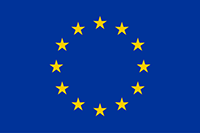Topic: Vulnerability in Biomedical Research: A Broad Spectrum
Learn here about how biomedical research can interact with existing vulnerabilities or, even, create new ones.
Vulnerability is a concept that aims to protect groups and individuals who have an increased likelihood of harm to their rights and well-being during/through their participation in biomedical research. The concept has been etched in international guidelines and widely discussed in scientific literature, as well as being practiced in life sciences research.
The word vulnerability derives from the Latin word vulnus, which means wound or injury, i.e., physical, psychological, and by extension also of a right.
By this definition, everything that is exposed to the possibility of being hurt, violated, injured, struck, beaten, offended, cut or damaged may be considered vulnerable.
In this way vulnus, seems to refer both to
- the action of injuring, the cause, the blow inflicted by those who have the power and the possibility to offend, if we think in research terms not to recognize and respect the individual as a participant,
- and to the state of the subject who suffers (the effect, the violation of the body, soul, affections, etc.).
A first fixed point deriving from the etymology of the word is linked to the aspect of possibility and not of state: vulnerable is who could, potentially, be injured. Consequently, the Barcelona Declaration highlights that:
“The vulnerable are those whose autonomy or dignity or integrity are capable of being threatened. And that vulnerability specifically requires not merely non-interference with the autonomy, dignity or integrity of beings, but also that they (vulnerable) receive assistance to enable them to realise their potential.”
A vulnerable population is a group of people who require greater protection than the others due to the potential risks of participating in research. When safeguarding a vulnerable adult, you:
- Ensure they can live in safety, free from abuse and neglect.
- Empower them by encouraging them to make their own decisions and provide informed consent.
- Stop the risk of abuse or neglect and prevent it from occurring.
Finally, it has been stressed by the NABC that in the context for research:
“…vulnerability should be understood to be a condition, either intrinsic or situational, of some individuals that put them at greater risk of being used in ethically inappropriate ways in research. (…)
In general, persons are vulnerable in research either because they have difficulty providing voluntary, informed consent arising from
-
- limitations in decision-making capacity
- situational circumstances
- because they are especially at risk for exploitation”
The Helsinki Declaration, in line with the Oviedo Convention, adds that:
“Medical research with a vulnerable group is only justified if the research is responsive to the health needs or priorities of this group and the research cannot be carried out in a non-vulnerable group. In addition, this group should stand to benefit from the knowledge, practices or interventions that result from the research.”
Vulnerability occurs along a spectrum: A particular situation or a particular characteristic of a person may place a person at greater or lesser risk of harm. To the extent that the situation or characteristic places that person at risk, that person is made more or less vulnerable.
The Research Ethics Committees (RECs) are charged with ensuring that additional safeguards are in place in the proposed research to protect the rights and welfare of subjects who are likely to be vulnerable. Furthermore, building a space for empowering the vulnerable, the minor, is also crucial.





